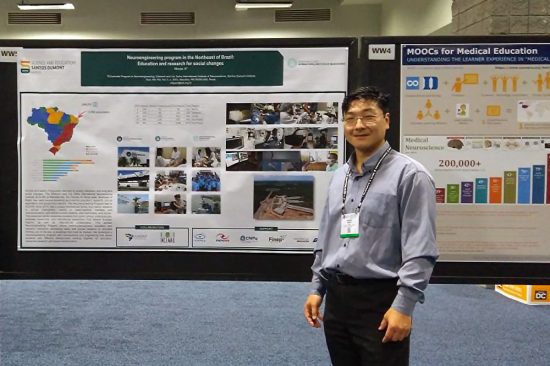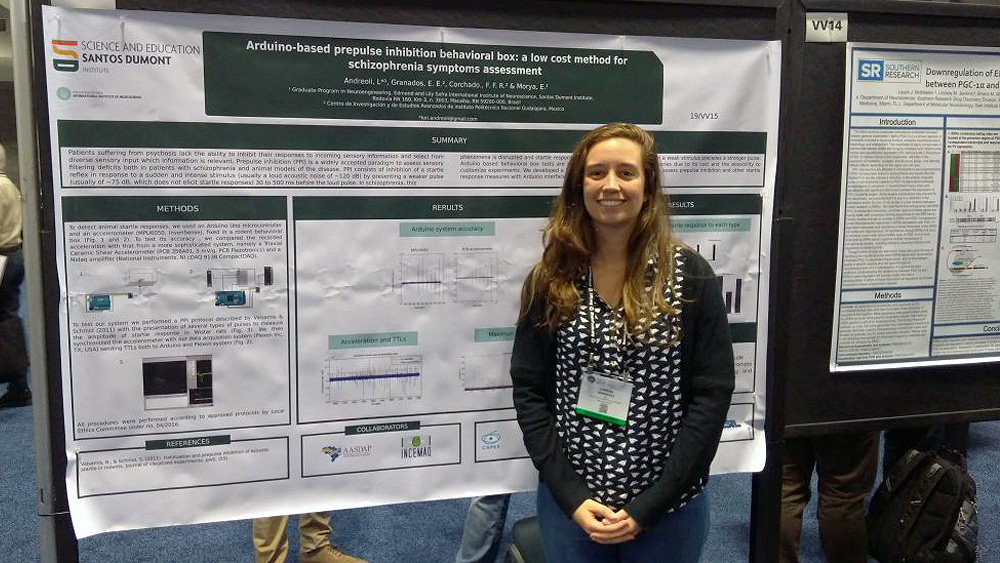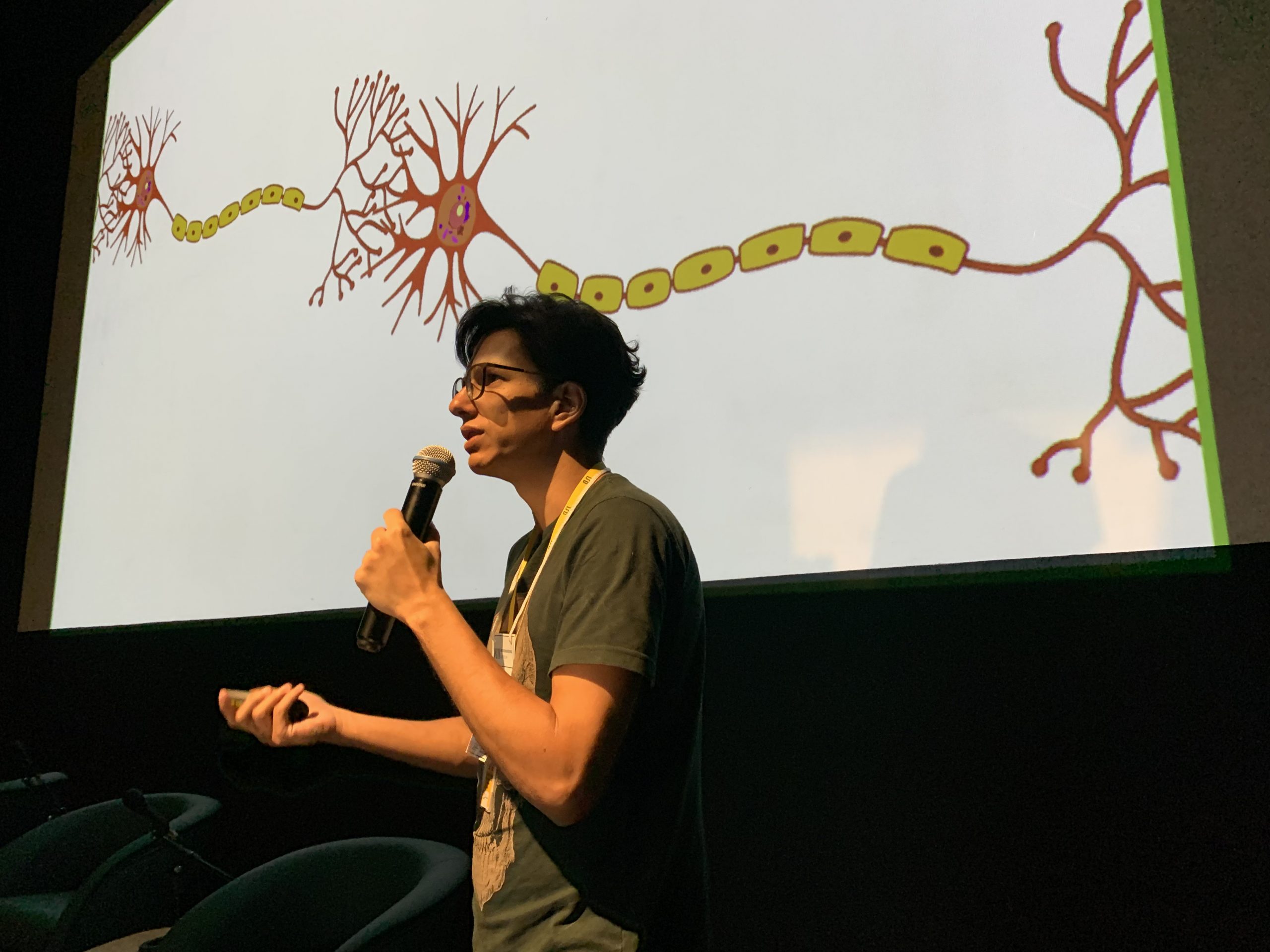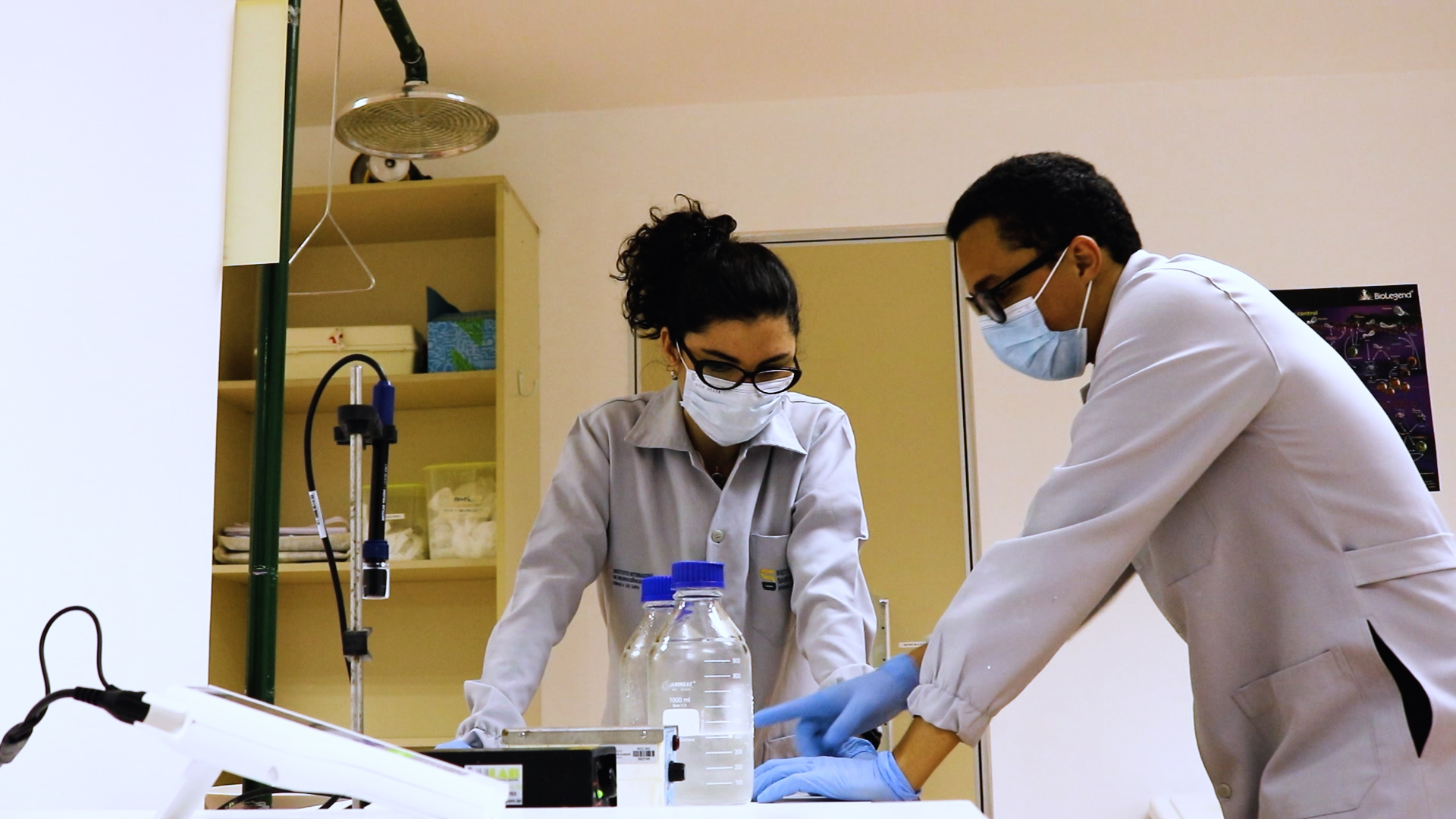Every year, some 30,000 professionals and students take part in Neuroscience, the world’s largest neuroscience conferece. Organized by the Society for Neuroscience, the event took place this year between 11 and 15 November in Washington, USA. The International Institute of Neurosciences Edmond and Lily Safra (IIN-ELS) integrated the event with the presentation of scientific works in poster format.
Lorena Andreoli, an IIN-ELS Neuroengineering Master’s student, brought to Neuroscience a behavioral study about a model of social interaction with rats and an evaluation method using an inertial sensor. She also presented this work at the Society for Social Neuroscience Annual Meeting on November 10, 2017. For Andreoli, “seeing the world’s greatest neuroscientists and the research they are developing has made me even more certain that we have conditions here in the Brazil, to produce studies with the same quality as those presented. “
Leila Cavalcante, a former master’s student in neuroengineering at IIN-ELS and a professor at the Federal Institute of Rio Grande do Norte (IFRN) in Ceará-Mirim, presented a paper on implantable electrode design for spinal cord stimulation for the treatment of motor disorders. “This event is inspiring because it is possible to meet the world’s leading research institutions and have the opportunity to talk to students and teachers from every corner of the globe. And you can still take pictures with great neuroscience personalities, “says Cavalcante.


Finally, Edgard Morya, research coordinator of the IIN-ELS, presented how education and research can enhance social development in Brazil, using neuroscience and neuroengineering, which are areas of strategic interest in developed countries. He comments that the IIN-ELS has received a transfer of technology and knowledge that allows to develop advanced research and to qualify differentiated human resources. “Our challenge now is to make the Brazilian himself aware of the extraordinary research tool that we have in Macaíba (RN), which is not behind foreign institutions,” explains Morya.
















